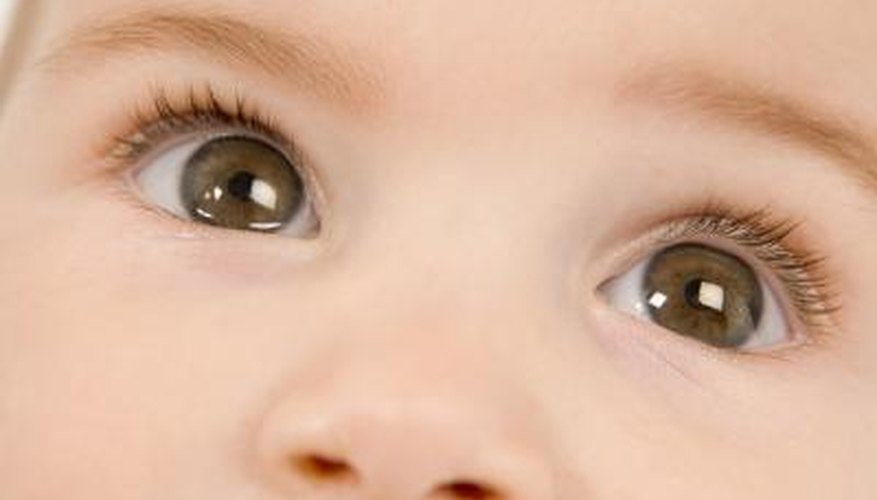Researchers have studied eye colour for more than a century, and throughout most of that time, they believed eye colour followed simple Mendelian genetic rules. Brown eyes were dominant, blue eyes recessive, and thus if both parents had blue eyes, their children's eye colour would inevitably match the parents'. But scientists have come to realise that eye colour is a polygenic trait, which means more than one gene influences it. While it is possible to estimate the probability of a baby having a particular eye colour, enough factors influence this trait that the precise shade of eyes a baby will have is one mystery that won't be solved until after a baby's birth.
- Researchers have studied eye colour for more than a century, and throughout most of that time, they believed eye colour followed simple Mendelian genetic rules.
- Brown eyes were dominant, blue eyes recessive, and thus if both parents had blue eyes, their children's eye colour would inevitably match the parents'.
Determine the eye colour of yourself, your mate and both of your sets of parents. While a baby will not necessarily have the same colour of eyes as his parents or grandparents, their genes provide the most direct influence on his eye colour.
Find out the eye colours of you and your mate's siblings. Sibling eye colours provide clues about possible recessive genes carried in your family trees. Brown-eyed parents with green- or blue-eyed siblings may carry genes for the lighter eye colours that their children could inherit.
Identify whether you or your mate comes from a population where the genes for a particular eye colour are more common. In most human populations brown eyes are the norm. Children with African or Asian ancestry, for instance, will most likely have brown eyes. Eye colours other than brown only appear frequently in white populations, and in those populations may even be the most common colours. A 2004 study in "Preventative Medicine" found that 89 per cent of Icelandic women and 87 per cent of Icelandic men had either blue or green eyes.
Plug your family's eye colours into an online baby eye calculator, like the one at the Tech Museum. This calculator provides an oversimplified model for predicting a baby's eye colour since it assumes only three eye colours exist, only two genes influence eye colour and everyone using the calculator shares an equal likelihood of producing children with brown, blue or green eyes. Despite these drawbacks, the calculator can provide a rough idea of how likely your baby is to have a particular eye colour.
- Identify whether you or your mate comes from a population where the genes for a particular eye colour are more common.
- This calculator provides an oversimplified model for predicting a baby's eye colour since it assumes only three eye colours exist, only two genes influence eye colour and everyone using the calculator shares an equal likelihood of producing children with brown, blue or green eyes.
TIP
Many babies are born with blue eyes because pigment in the iris hasn't developed yet. But after birth, light stimulates the production of melanin, and baby's eyes may start changing. You will likely have a good idea of what colour your baby's eyes be when she reaches 6 to 9 months of age.
